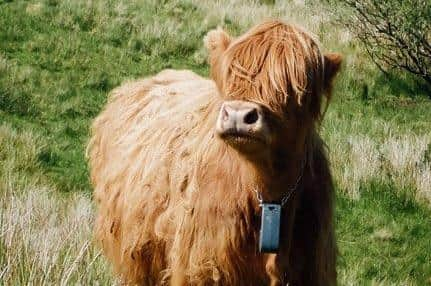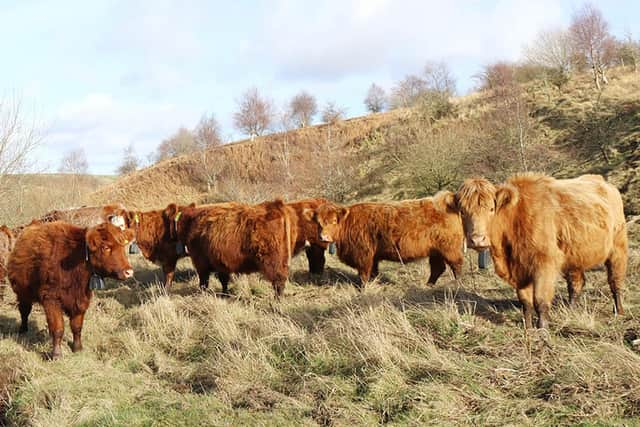There's an app for that: Hi-tech electric shock device will control cattle movements
In a trial of the satellite-guided technology, cows in picturesque Glentrool will be fitted with state-of-the-art devices to help conservation efforts in an area managed by Forestry and Land Scotland (FLS).
Glentrool is steeped in history and was the scene of an early victory over the English by Robert the Bruce.
Advertisement
Hide AdAdvertisement
Hide AdThe site of the 1307 Battle of Trool is marked by Bruce’s Stone to show where the English troops were ambushed with a volley of rocks and trapped between heavily armed Scots and the waters of Loch Trool. The battle was a precursor to the final victory over King Edward II’s army at Bannockburn in 1314.


Over-grazing by wild goats has already damaged several parts of Glentrool – which lies between Kirkcudbrightshire and Wigtownshire - and rangers have now set up areas the cows can graze in and when they approach the edge, or the virtual fence, the device will start to make a noise.
The cattle will be used to ‘poach’ the ground, breaking up the bracken rhizomes and cropping back the grass, allowing other seeds and plants to take root.
The hope is that this will create open ground and, in time, promote self-seeded broadleaf regeneration from the Glentrool Oakwoods, a Site of Special Scientific Interest.
The devices gradually increase in pitch and, if the cow does not turn around, it issues a mild shock equal to that from an electric fence.


The technology means that the cattle can safely wander, potentially across very large areas of many hundreds of hectares, without the need for fences or barbed wire penning them in and blotting the countryside.
Kim Kirkbride, Environment Forester said: “We already use cattle in several of our forests to promote ‘conservation grazing’ such as in Mabie forest near Dumfries where they’re used to help create habitats for rare butterflies.
“If this trial is successful, it will allow us to consider a wide range of conservation grazing across our landholdings such as working over large areas of open hillside where we could not possibly build and maintain physical fencing.
Advertisement
Hide AdAdvertisement
Hide Ad“It will also enhance environment and biodiversity outcomes on habitats already managed by grazing livestock.”
Early discussions with prospective graziers have also highlighted that the technology could have additional benefits in improving livestock care and helping graziers to manage their operations more efficiently.
QR codes linked to the virtual fencing show the pasture boundary as well the animals’ location, so walkers can check before they go in to an area, to see where the cattle are.
The system, has been pioneered by the Norwegian company Nofence - which produces similar devices for sheep and goats – and is already in use in a handful of sites in England such as Epping Forest. Using a combination of GPS, mobile data network, audio signals and solar power, the system’s receivers track the exact position of each animal via GPS and the data is then transmitted to apps on the mobile phones of forest staff and graziers, who can then determine the grazing areas on digital maps.
Comments
Want to join the conversation? Please or to comment on this article.